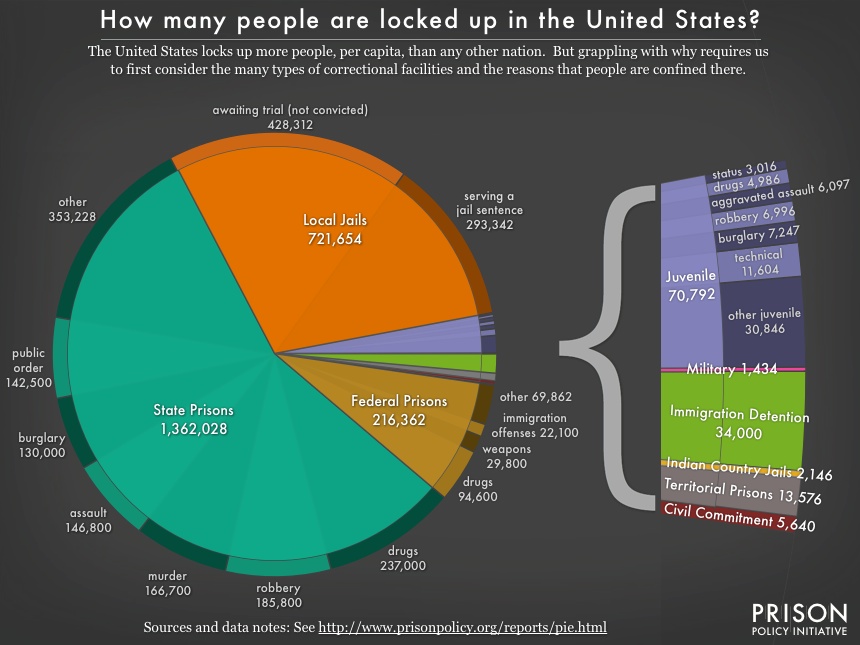In March 2014, the Prison Policy Initiative released a graphic visually clarifyingthe amount of people incarcerated within systems of federal, state, local, and other types of confinement in America. These various systems hold over 2.4 million people in 1,719 state prisons, 102 federal prisons, 2,259 juvenile correctional facilities, 3,283 local jails, and 79 Indian Country jails as well as in military prisons, immigration detention facilities, civil commitment centers, and prisons in the U.S. territories.
The briefing reveals fascinating statistics on the enormous churn in and out of American prisons and jails, on the amount of people incarcerated for drug-related crimes, on the vast number of children behind bars for minor offenses, and on immigration-related detentions. The sources behind the graphic are multiple, but they include the Bureau of Justice Statistics and theOffice of Juvenile Justice and Delinquency Prevention.
The briefing concludes with a hopeful message about the graphic’s potential impact in catalyzingchange.
“Looking at the big picture requires us to ask if it really makes sense to lock up 2.4 million people on any given day, giving us the dubious distinction of having the highest incarceration rate in the world. Both policy makers and the public have the responsibility to carefully consider each individual slice in turn to ask whether legitimate social goals are served by putting each category behind bars, and whether any benefit really outweighs the social and fiscal costs. We’re optimistic that this whole-pie approach can give Americans, who seem increasingly ready for a fresh look at the criminal justice system, some of the tools they need to demand meaningful changes to how we do justice.”
Read the entire briefing and check out the graphic here.
